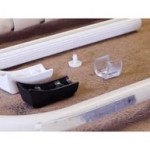Cost of Natural Stone Patio Per Sq Ft: A Comprehensive Guide
Natural stone patios provide an elegant and durable outdoor living space. Their timeless appeal and natural variations in color and texture make them a popular choice for homeowners seeking to enhance their property's aesthetic. However, understanding the cost implications associated with a natural stone patio project is crucial for budgeting and planning purposes. This article provides an in-depth analysis of the factors influencing the cost of natural stone patios, focusing specifically on the price per square foot.
The cost of a natural stone patio per square foot is not a fixed value. It is influenced by a complex interplay of factors, including the type of stone selected, the complexity of the installation, the site preparation requirements, and local labor rates. Each of these elements contributes to the overall project expense, and a thorough understanding of each is essential for accurate cost estimation.
Key Factors Influencing Natural Stone Patio Costs
Several key factors contribute to the overall cost of a natural stone patio. These factors can be broadly categorized into material costs, labor costs, and site preparation expenses. Understanding these factors is key to accurately estimating the total cost of the patio project.
Material Costs: The Choice of Stone
The type of natural stone selected is the most significant determinant of the material cost. Different types of stone vary widely in price due to factors such as availability, quarrying difficulty, transportation costs, and inherent properties like durability and porosity. Some of the most common types of natural stone used for patios include:
Flagstone: Flagstone is known for its large, flat slabs and natural variations in color and texture. It is a popular choice for creating rustic and informal patios. The price of flagstone typically ranges from $15 to $30 per square foot, depending on the specific type and thickness. Thicker flagstone generally costs more due to the increased material and labor required for handling.
Pavers: Natural stone pavers are pre-cut into uniform shapes and sizes, making them easier to install than irregular flagstone. Common types of stone pavers include granite, travertine, and bluestone. The price of natural stone pavers can range from $10 to $40 per square foot, depending on the type of stone, the size of the paver, and the finish.
Bluestone: Bluestone, characterized by its distinctive blue-gray color, is a popular choice for patios due to its durability and attractive appearance. It is available in both irregular flagstone and uniform paver formats. The price of bluestone typically ranges from $20 to $45 per square foot, depending on the grade and thickness of the stone.
Travertine: Travertine is a type of limestone known for its porous texture and warm, earthy tones. It is often used in upscale patio designs due to its elegant appearance. The price of travertine typically ranges from $12 to $35 per square foot, depending on the grade and finish.
Granite: Granite is an extremely durable and weather-resistant stone that is well-suited for high-traffic patio areas. It is available in a variety of colors and finishes. The price of granite pavers typically ranges from $15 to $40 per square foot, depending on the color and finish.
Beyond the stone itself, other material costs include the base material (typically gravel or crushed stone), polymeric sand for filling the joints between the stones, and any necessary sealants or adhesives.
Labor Costs: Installation Complexity and Expertise
Labor costs represent a significant portion of the overall expense of a natural stone patio project. These costs are influenced by several factors, including the complexity of the design, the size of the patio, the accessibility of the site, and the prevailing labor rates in the area. Skilled and experienced installers command higher rates due to their expertise and efficiency. The complexity of the design directly impacts the installation time. Intricate patterns, curves, and custom cuts require more labor and precision, increasing the overall cost.
The size of the patio also affects labor costs. Larger patios naturally require more labor hours for installation. Site accessibility can also be a factor. If the site is difficult to access, requiring manual transport of materials, the labor costs will increase.
Geographic location significantly impacts labor rates. Areas with a higher cost of living typically have higher labor costs. It is essential to obtain multiple quotes from local contractors to ensure competitive pricing and to assess their experience and qualifications. Labor costs typically range from $8 to $20 per square foot, depending on the factors mentioned above. This range includes the labor required for excavation, base preparation, stone laying, and joint filling.
Site Preparation: Foundation for Success
Proper site preparation is crucial for the longevity and stability of a natural stone patio. Inadequate site preparation can lead to settling, shifting, and cracking of the patio surface over time, resulting in costly repairs. Site preparation typically involves excavation, grading, and the installation of a compacted base. The extent of site preparation required depends on the existing soil conditions and the desired level of stability.
Excavation involves removing the topsoil and any organic matter to create a stable base for the patio. Grading ensures proper drainage and prevents water from pooling on the patio surface. A compacted base, typically consisting of gravel or crushed stone, provides a solid foundation for the stone pavers or flagstone. The depth of the base depends on the soil type and the expected load on the patio.
In some cases, additional site preparation may be required, such as the installation of a drainage system or the removal of tree roots. These additional tasks will add to the overall cost of the project. Site preparation costs typically range from $3 to $8 per square foot, depending on the complexity of the work involved.
Detailed Breakdown of Costs
To provide a more detailed understanding of the cost breakdown, consider a hypothetical example of a 200 square foot natural stone patio project. This example assumes a relatively straightforward design with moderate site preparation requirements.
Material Costs:
- Bluestone Pavers: $30 per square foot x 200 square feet = $6,000
- Base Material (Gravel): $200
- Polymeric Sand: $100
- Sealer: $50
- Total Material Costs: $6,350
Labor Costs:
- Excavation and Grading: $400
- Base Preparation: $300
- Stone Installation: $2,000
- Joint Filling and Sealing: $200
- Total Labor Costs: $2,900
Site Preparation Costs:
- Excavation and Grading: Included in Labor Costs
- Base Compaction Equipment Rental: $100
- Total Site Preparation Costs: $100 (Excluding Labor)
Total Project Cost:
- Material Costs: $6,350
- Labor Costs: $2,900
- Site Preparation Costs: $100 (Excluding labor)
- Total Project Cost: $9,350
Therefore, the cost per square foot for this example project is $9,350 / 200 square feet = $46.75 per square foot. This example highlights the relative contribution of each cost component. Material costs, particularly the cost of the stone itself, represent the largest portion of the overall expense.
Strategies for Managing Natural Stone Patio Costs
While the cost of a natural stone patio can be significant, there are several strategies homeowners can employ to manage their expenses and potentially reduce the overall project cost.
Choosing Cost-Effective Stone Options
Selecting a less expensive type of natural stone can significantly reduce material costs. Consider options such as locally sourced stone, which typically has lower transportation costs, or less formal options like gravel patios with strategically placed stone accents.
Simplifying the Design
A simpler patio design with straight lines and minimal custom cuts will reduce labor costs. Avoid intricate patterns or complex shapes that require more time and expertise to install.
Phased Installation
If budget constraints are a concern, consider installing the patio in phases. This allows homeowners to spread the cost over a longer period. For example, the base preparation can be completed in one phase, followed by the stone installation in a subsequent phase.
DIY Components
Homeowners with the necessary skills and experience can potentially save money by performing some of the less complex tasks themselves, such as excavation, grading, or base preparation. However, it is crucial to ensure that these tasks are performed correctly to avoid compromising the structural integrity of the patio.
Obtaining Multiple Quotes
Always obtain multiple quotes from different contractors to ensure competitive pricing. Compare the quotes carefully, paying attention to the scope of work included and the quality of materials used.
By carefully considering these strategies, homeowners can potentially reduce the cost of their natural stone patio project without compromising on the overall quality and aesthetic appeal.

How Much Does A Stone Patio Cost 2025 S

How Much Does Stone Patio Installation Cost Travertine Paver Concrete

2025 Bluestone Patio Cost S Per Square Foot

How Much Does A Stone Patio Cost 2025 S

How Much Does Flagstone Cost Landscaping Network

Southwest Boulder Stone 60 Sq Ft 18 In X 12 2 Silver Quartzite Natural Flagstone For Landscape Gardens And Pathways 02 0212 The Home

2025 Bluestone Patio Cost S Per Square Foot

Paver Patio Cost More Affordable Than You Might Think Elevate Outdoor

How Much Does A Patio Cost In 2025

Discover Bluestone Patio Costs Per Square Foot S
See Also








